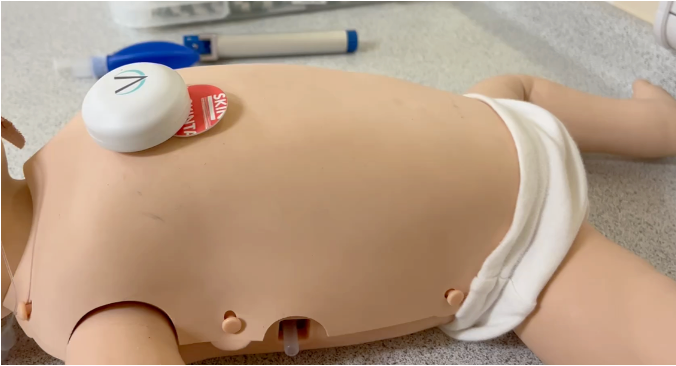Another view: of appointment slots

In my last couple of columns, I’ve been talking about new ways of communicating with patients. In doing so, I mentioned appointment systems; and since then I’ve found them coming up in conversation as well.
This has set me thinking about them in more detail. I read an article about a consultant geriatrician who effectively uses my dynamic slot length idea.
He codes his patients green, yellow and red depending on how many comorbidities they have; giving the more complex patients longer to be seen.
He thinks it works well. Of course, he is doing this selection manually; but he can manage that, as he sends out appointments, and doesn’t allow people to book without his assessment.
This made me think about why we have ten minute appointments in GP practice. Could a practice cope with different doctors seeing different numbers of patients?
Why ten minute slots?
The easy answer for “why ten minute appointments” is to turn to the IT people: that’s what their systems give us. However, most of their systems replicate pre-existing, paper based systems; so perhaps our laziness underlies this. We should have been more creative?
Another reason for our rigid appointment systems is possibly trust. It might come as a shock to some, but in partnerships there is often an obsession with everyone doing the same workload: and workload is considered to be seeing patients.
Partnership finances don’t easily allow for people to work different amounts. They deal in things like measured days or sessions. As we are all divide the profits equally, everyone wants everyone else to do the same. Doing the same is based on numbers seen not work done.
Looking after a small number of patients well – and keeping them alive and fit and out of hospital – doesn’t really count. Neither does managing the business well. I’ve known partners leave partnerships because of perceived or real inequities in workload, based on numbers of people seen.
Saying sorry
I think patients also suffer from rigid appointment systems. During a conversation about the GP survey results that were published the other week, a friend mentioned that his GP never said “sorry” to him for running late.
My friend said his GP is a nice GP, caring, competent. “We get on; but he never runs to time and as nice as he is he never apologises for being late.”
“It’s probably because he doesn’t think it’s his fault,” I replied. He has 18 ten minute slots. Some patients overrun. Some don’t; but then some days you get interrupted endless times for urgent prescriptions or visits or messages or phonecalls.
There is always someone at your door, trying to get your attention as they have tracked you down. It’s amazing that anyone runs to time.
My friend accepted that; but still argued that from a customer relations perspective his GP would get better satisfaction scores if he did apologise – no matter whose fault.
We then had a discussion about the reception letting the waiting room know what was going on. Call boards can do some of this, but they’re not always great.
My friend also criticised surgeries that display signs saying ‘one appointment one problem.’ He said they shouldn’t be trying to change the patient, but the appointment system.
Meeting expectations
Overall, my friend felt there was an expectation problem. Doctors think the time given for an appointment is a guide or approximation – patients think it is a definite slot. Doctors think of an appointment in which something pretty specific will happen – patients think of it as an opportunity to raise any health issues they have got.
To take this a bit further, we looked at a nearby practice. They run an open surgery. No slots: you sit and wait. Up to three hours. They got amazing results on their patient survey. WHAT!??
“It’s expectation,” my friend said. If you know you are waiting hours, perhaps you aren’t upset when you wait – and often it will be faster than you think.
If all you have is a time slot, perhaps that’s all you have to focus on. You don’t know how many people are in front of you or how long any of those people will take.
Thinking back, when I worked in outpatients, I worked in some departments that used the idea of time zones. “You will be seen between 2pm and 3pm.”
Some made it clear the patient would be around for the whole clinic – having investigations and so forth. Even so, I can’t see many people being happy to have to wait a whole half day for a simple problem. So where does this get us?
Re-designing a better system
If I was designing a system from scratch, as well as trying to predict how long patients will take, and adjusting the length of slots accordingly, then I’d use some of the information that is around on how long different patients need.
I would be very careful about the use of absolute time slots. I would try to give people rough indicative times and update them as much as possible on how things are going, how many people are in front of them, and what the average waiting time is.
I would try and build in gaps for catch ups and interruptions. I would base this on historic data, but also have the ability for people to request an urgent appointment in a gap.
At the moment, if the district nurse wants to see me about someone urgently, she hovers outside my door, then comes in when a patient leaves. After that, I run late.
Why can’t she press a priority button and be fitted in? Why can’t the schedule then move dynamically, using an app or text messaging to let people know what had happened? We would also be able to measure how often this happened, and re-plan accordingly!
On this theme, I’d also try to measure as accurately as possible the amount of work done. This will scare some. But using data such as age of people seen, deprivation, number of diseases per person, number of problems dealt with, was it a first appointment, a follow-up, was there an intervention and so on, it should be able to measure the work done – not just the number of people seen.
It might also be easier to identify work that could be done by others; improving productivity. Most will know a doctor who is either running a counselling service or a specialist dermatology service. Perhaps worse, most will also know a doctor who is just doing blood pressure checks on the same people over and over again.
In my ideal world
If the patients get the right amount of time to have their problems dealt with, if doctors get enough time to do deal with those problems, if everyone is running efficiently and everyone is happy; then we will either prove that we are all doing the same thing, or be able to measure who is doing what. That has got to be a better system.
Of course, I would also integrate my super appointment system with a video/telephone call making and recording system. I would have computerised triage of slots to direct people to the right person. And I would make sure people could see their records so they didn’t book an appointment before the letter they wanted to discuss was back…

 |
Dr Neil PaulDr Neil Paul is a full time partner at Sandbach GPs; a large (22,000 patient) practice in semi-rural Cheshire. He is also one of the directors of Howbeck Healthcare Ltd. |
 |




